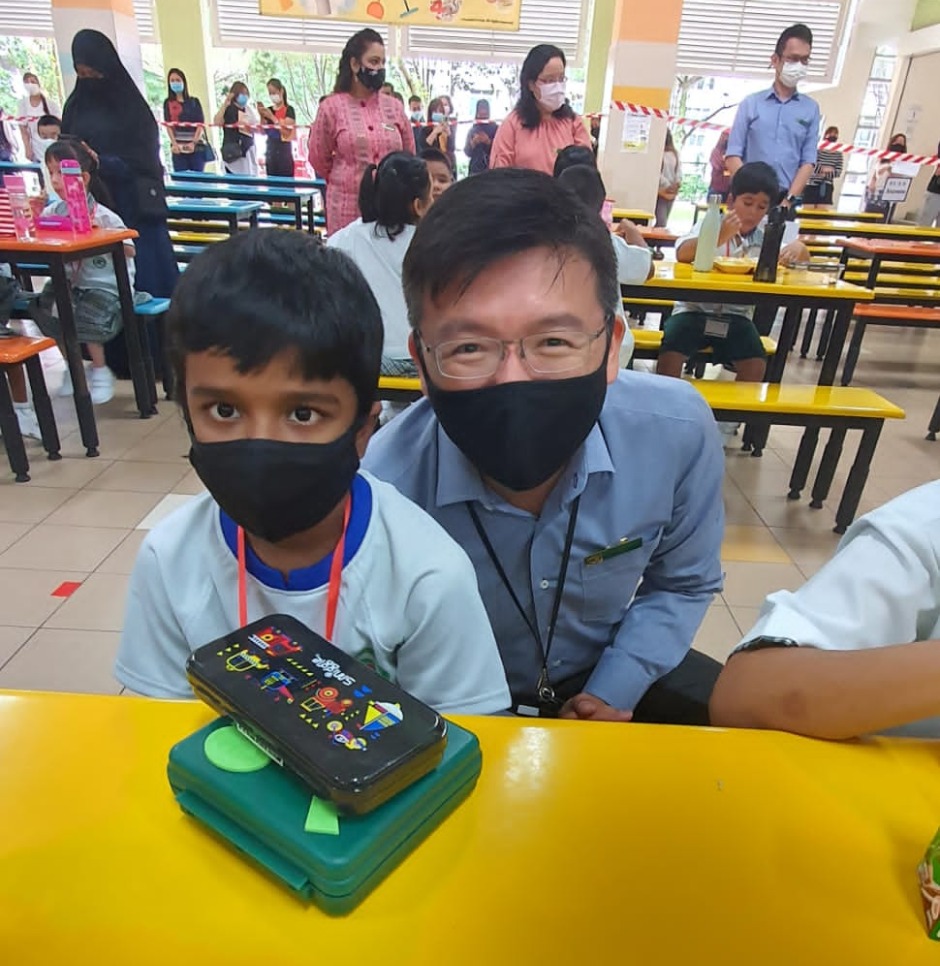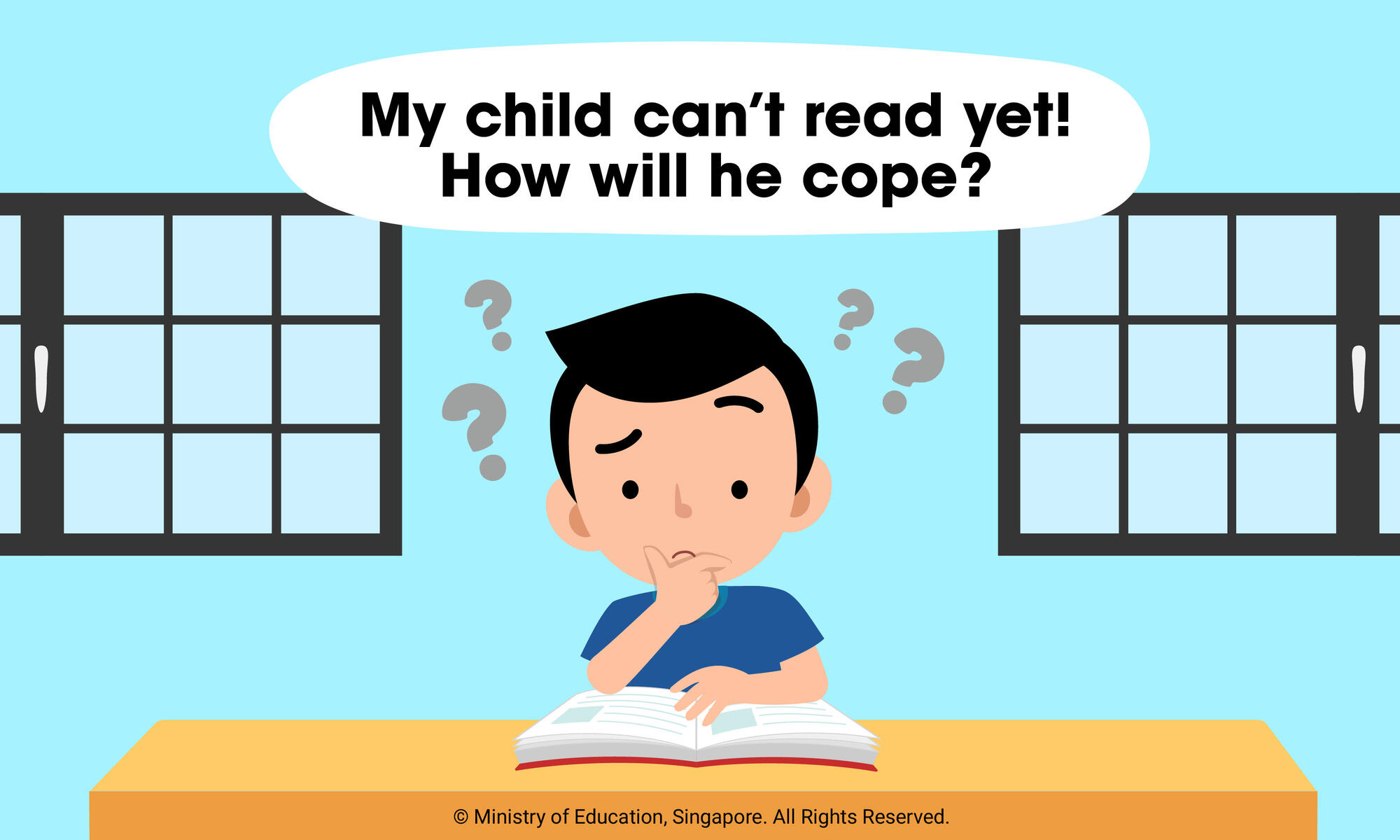
1. I’ve tried my best to teach my child but he still hasn’t learned to read.
Many children have started school not knowing their ABCs but blossomed into independent readers later on, say experienced teachers such as Mrs Daphne Goh, Senior Teacher at CHIJ Kellock.
While it is an advantage for your child to be able to read before entering Primary 1, it is not mandatory.
It is never too late to start getting your child interested in books. Take your child to the library, expose them to various picture books and read together for a start. Bedtime storytelling sessions with your child is also a great parent-child bonding opportunity. When out with your child, point out to signs and words in the surroundings.
At school, the teachers will expose the students to various text types by reading to them on a regular basis. Teachers will create learning experiences for the students in which they learn new vocabulary. Students will be introduced to various genres of books at the library, and be taught how to blend letter sounds by teaching phonics through games or craft work.
“Once children experience the joy of learning and fall in love with the world of storybooks, everything else will fall into place seamlessly. Parents should encourage their child for any effort in learning to read. Most importantly, reading should be a fun learning process.”
Mrs Daphne Goh, Senior Teacher, CHIJ Kellock
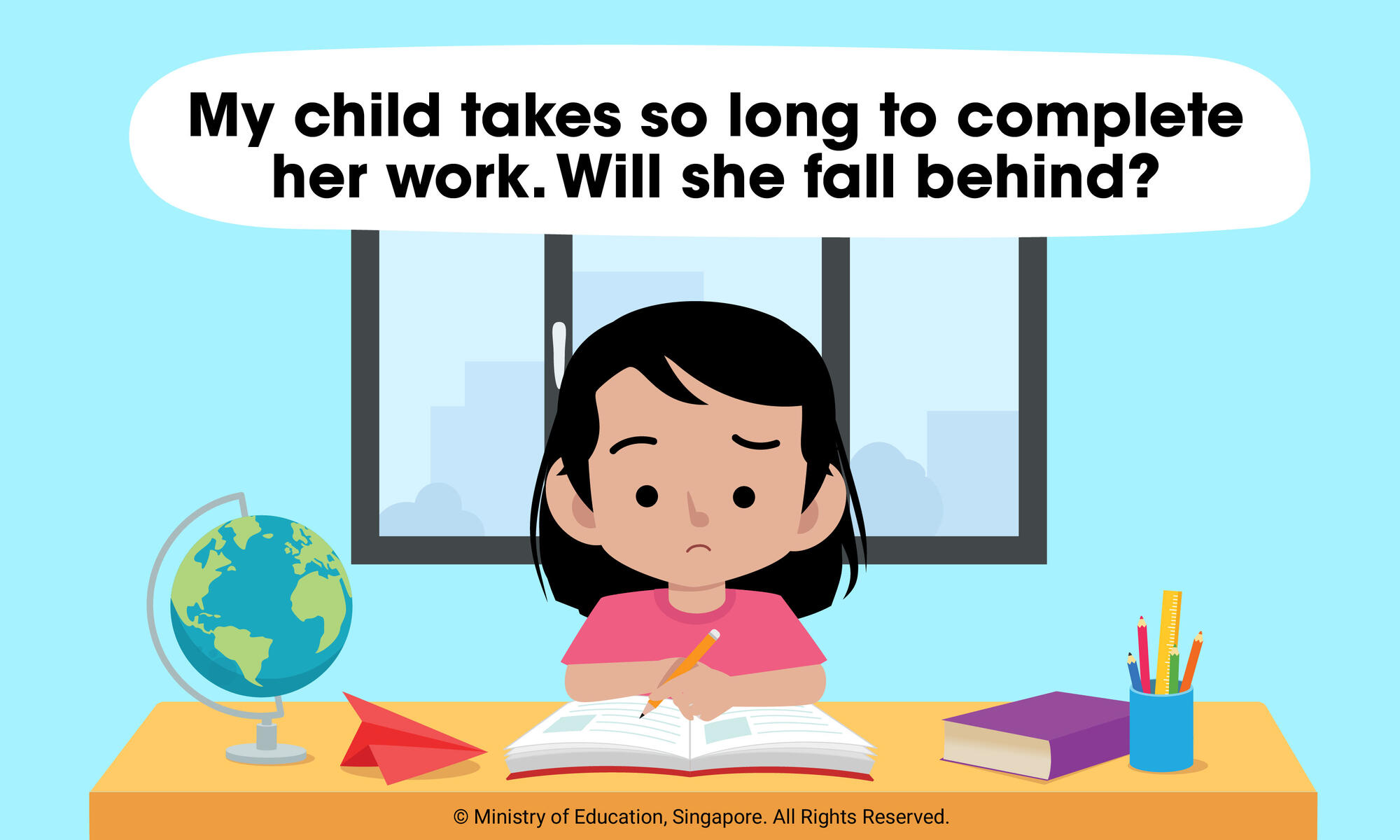
2. My child takes her time in everything she does. What if she can’t finish her homework?
Children pick up time management at a different pace and can improve with help.
At school, teachers guide students by giving them the time assigned for a piece of work and get them to write the time down on their worksheets.
Parents can model this with their children at home with small tasks and everyday activities. If you find your child struggling with completing their tasks or homework within a given time, it could mean two things: the lack of time-keeping has become a bad habit, or the child is not sure how to go about the work.
When you have identified the reason, bring this up to his teacher to find a solution together. For instance, if the child is unsure of the work, he could be given differentiated worksheets, eventually gaining confidence and catching up with the class.
Home support is important for the child’s learning. And if you notice any learning issues, do seek early intervention.
“Children don’t understand what is too slow, so be specific about how much time they should spend on the work, and what time they should complete the work. For children who can’t tell time yet, use a timer.”
Madam Yvonne Ng, Senior Teacher at Pei Tong Primary School
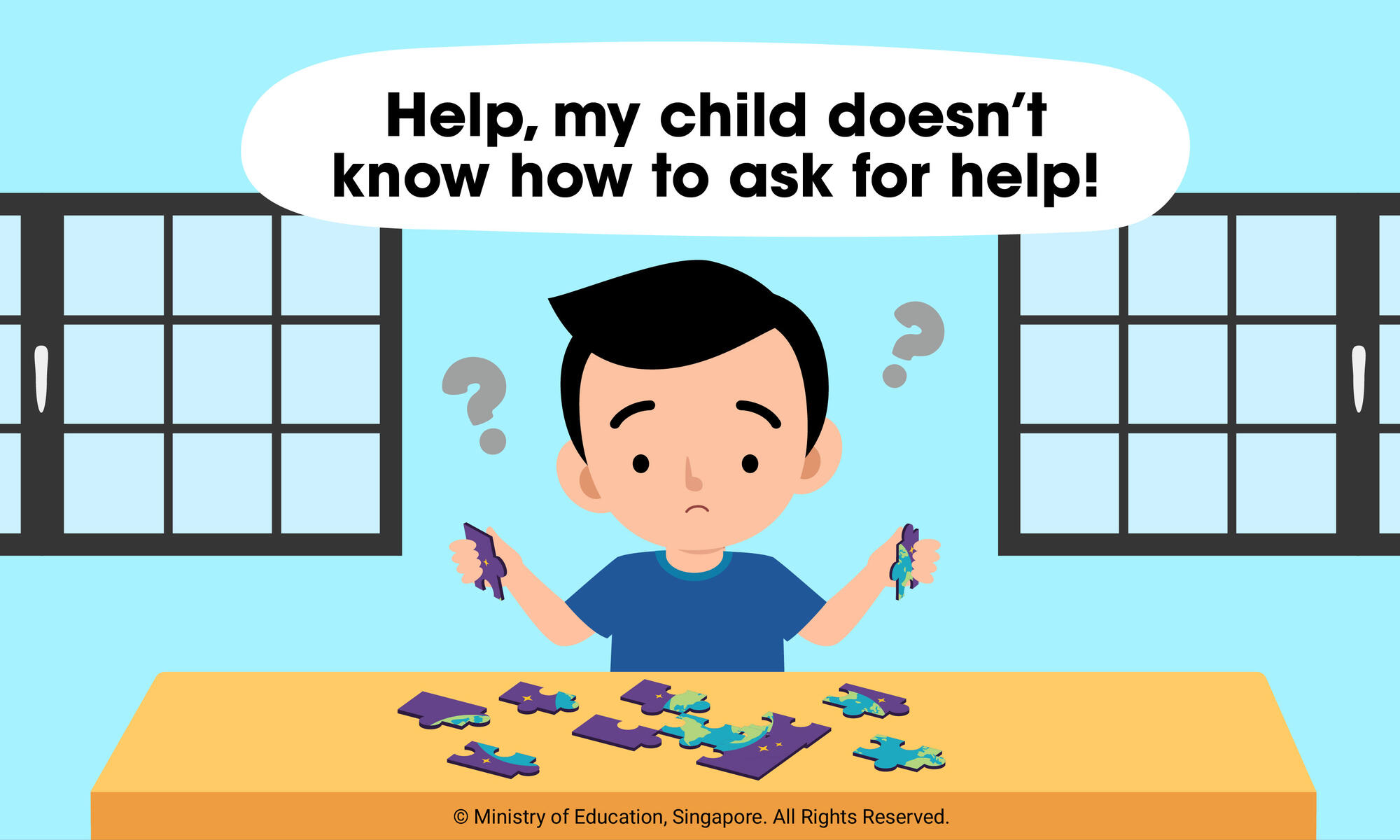
3. My child is too shy to seek help.
When you need help, you need to ask for it — this may seem obvious to adults, but not always to a child.
To help students settle in to Primary 1, their teachers and buddies take steps to warm them up to the new faces around them, and their new surroundings and routines. Teachers will also advise students on how to seek help, following steps such as:
Step 1: Look for someone who can help.
Step 2: Check if that person has the time to help; if not, look for another suitable person. If it is about a classroom task, consider approaching a classmate.
Step 3: Share what the problem is and how they feel.
Step 4: Listen carefully to the advice given.
Step 5: Thank the person for the help.
Students are often given a demonstration of these steps, before they practise the steps through role-play and discuss the rationale behind each step taken.
At home, parents can reinforce these steps by getting their children to ask for help in situations such as to join in an activity. Praise them for their politeness and positive social skills, while reassuring those who are less confident and more nervous. Teach them calming techniques like breathing in and out slowly.
Parents can also work together with the school and your child’s teacher to look out for the areas where the child needs more help in.
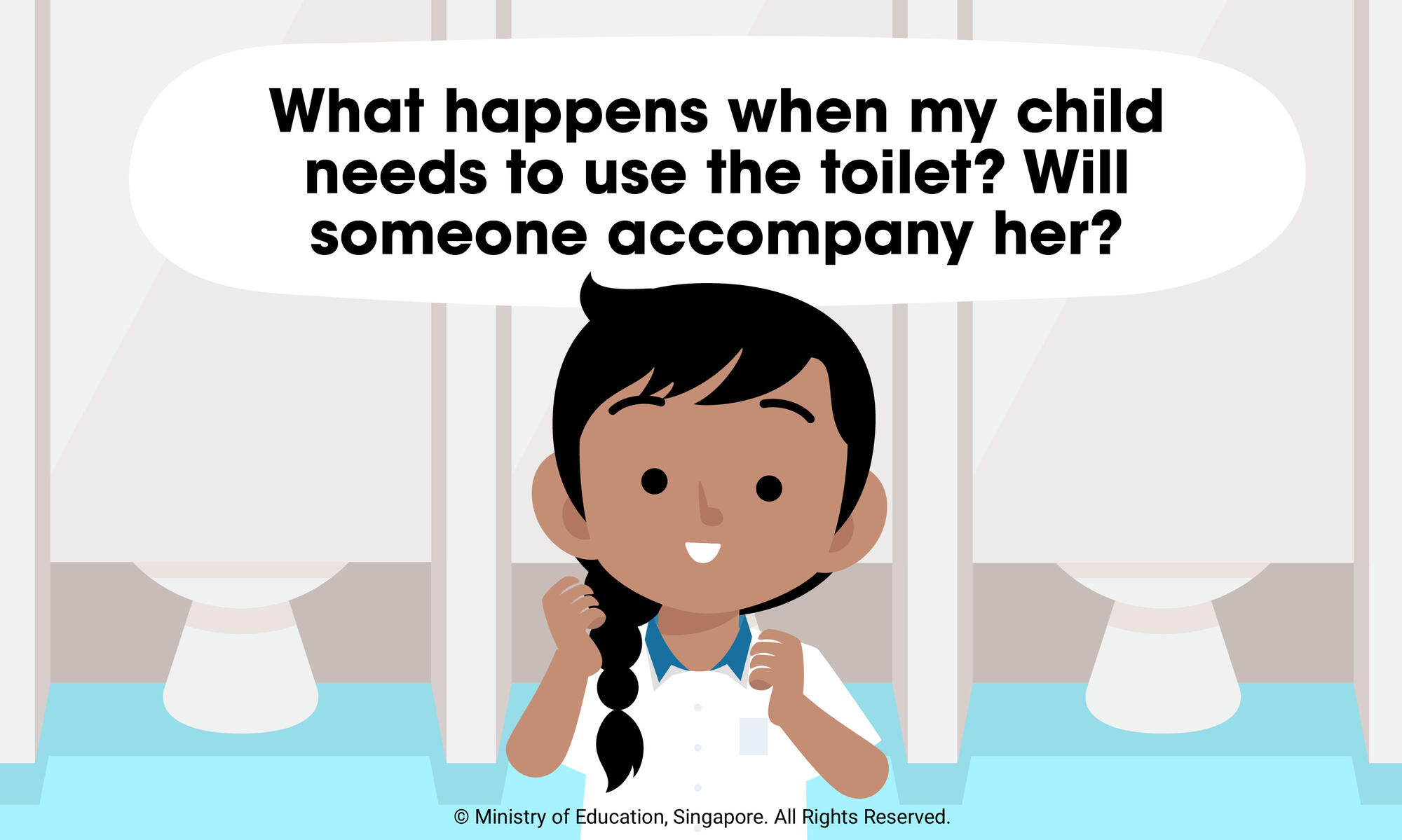
4. My child is not used to going to the toilet by herself.
For starters, toilet accidents are rare. That is not to say the odd mishap will not occur, from getting locked inside the cubicle to not reaching the toilet in time.
This is where the school orientation helps. On the first day of school, students are shown where the toilets are, and how to use them – including how to lock and unlock the toilet doors.
By Primary 1, children are expected to be able to clean themselves after using the toilet. So what they may need is for a buddy to accompany them to the toilet and back, in case they get lost. By the end of the term, however, most students would be able to find their own way around the school themselves.
Some students may be shy at first to ask to go to the toilet, but don’t worry, Primary 1 teachers are pretty adept at spotting the signs of need, from the students’ body language, facial expressions, or crossing of the legs, and will prompt the students to go.
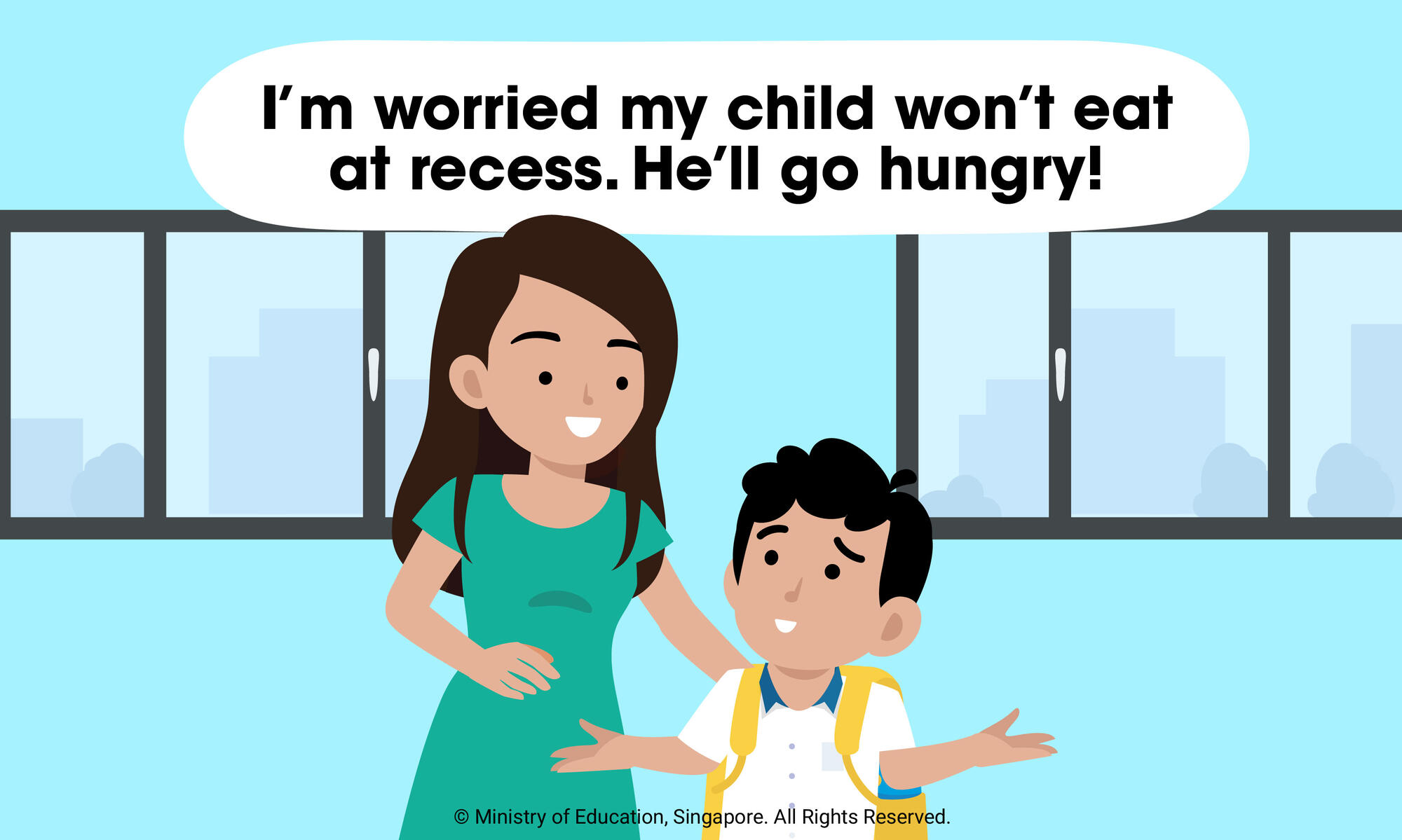
5. It’s recess time! What if my child plays and skips his meals?
It’s a fact — all students enjoy recess.
They may enjoy it so much that they forget to eat. Cue teachers who advise students on how to manage their time better, so they can both eat and play within the allocated time.
On the first day of school, students are shown the canteen, seating areas, and the various stalls, some of which come with helpful photos of food on display so students can just point and pay.
Plus, during the first week of school, the Primary 1 students are given extended recess times to help them get used to the busy processes of buying food or getting a seat, with teachers standing by to help where necessary.
Some students may not be eating because they are shy about ordering food. After all, when at home or at childcare, food is usually served to them!
Parents could help by letting their child practise ordering food when out with the family. They could also try making payment and handling money. If they need more time to build their confidence or observe how it is done by other students, parents may want to pack a lunch box in their bags in the meantime, so they will always have something to eat. However, if you worry that your child isn’t eating at all, do bring it up to the teacher.
“Eating during recess is important as it helps students concentrate during lessons. Sometimes, I have to encourage students to eat first before heading to the bookshop or running off to play with their friends.”
Madam Naziathul Suhailah d/o Ibrahim, Senior Teacher at White Sands Primary School
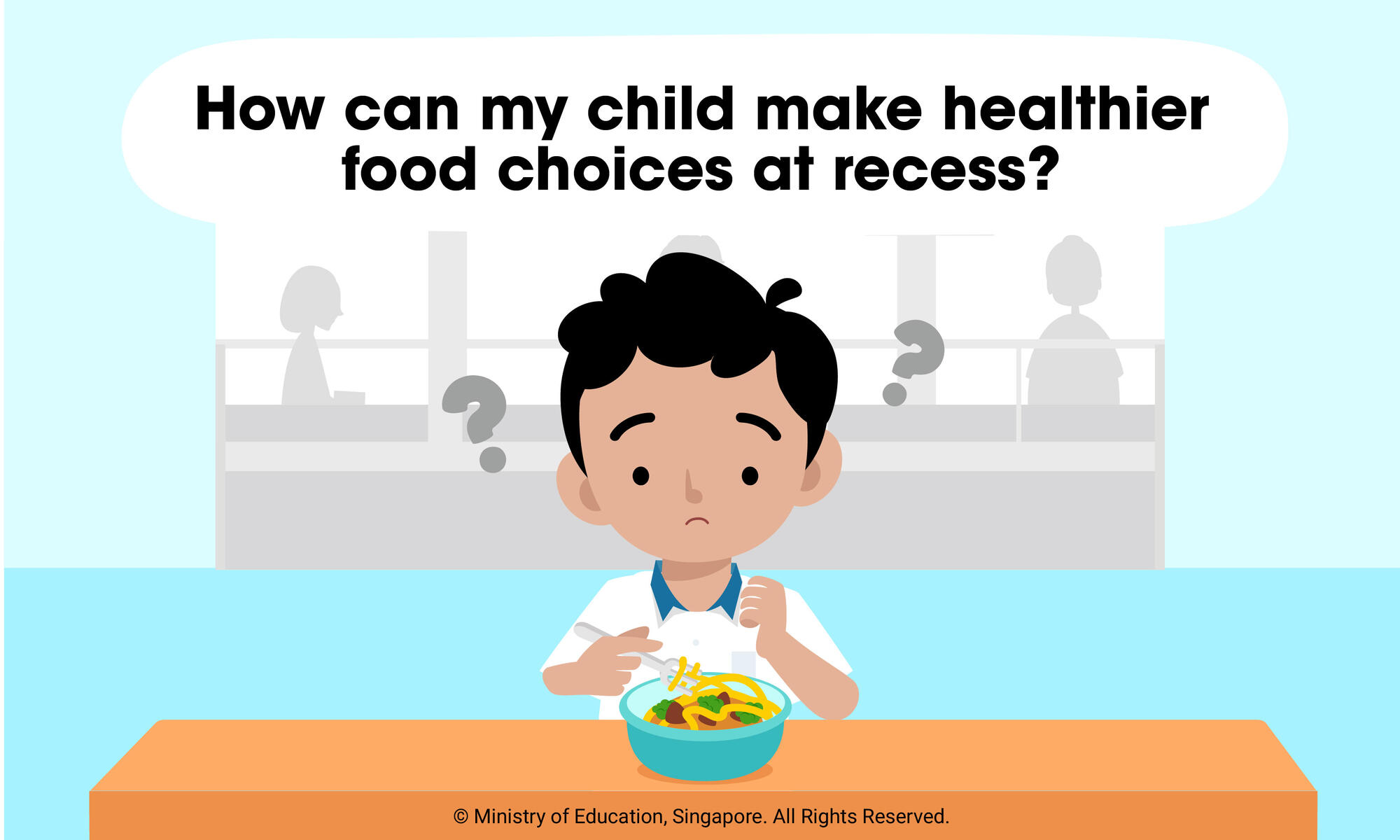
6. My child won’t know how to pick the right foods at recess.
Your P1 child may be buying food for the first time, and there are so many yummy-looking snacks and dishes to choose from at the school canteen! What if they pick the “wrong” ones?
Firstly, do not expect children to eat the same foods as what they had as preschoolers. Their appetites and interest in food will change and they may want some autonomy in their food choices, especially when they see what their schoolmates are having at recess.
However, you can improve the odds of them selecting more vegetables over deep fried foods for recess by introducing them to healthy eating early on.
You could start by packing them a lunch box of healthy favourites for recess a few times a week. Consider shopping and packing the food with your child; they can learn more about what they like and what goes into their tummy. You’ll be steering them towards making similarly healthy choices when they order food on their own at the school canteen.
Get to know the various stalls in the school canteen, so you can recommend the healthier choices for your child. For the ‘Refresh’ break, tempt them away from the tidbit section by tucking a small box of nutrient-rich, easy-to-eat snackables such as grapes or cherry tomatoes into their schoolbags.
Special thanks to our teachers for their contribution to this article:
Mrs Daphne Goh (CHIJ Kellock), Mrs Andrea Tee (Fernvale Primary School), Mdm Anna Shii (Kuo Chuan Presbyterian Primary School), Mdm Yvonne Ng (Pei Tong Primary School), Ms Nor Erwiena Bte Winarno P (Pioneer Primary School), and Madam Naziathul Suhailah d/o Ibrahim (White Sands Primary School).



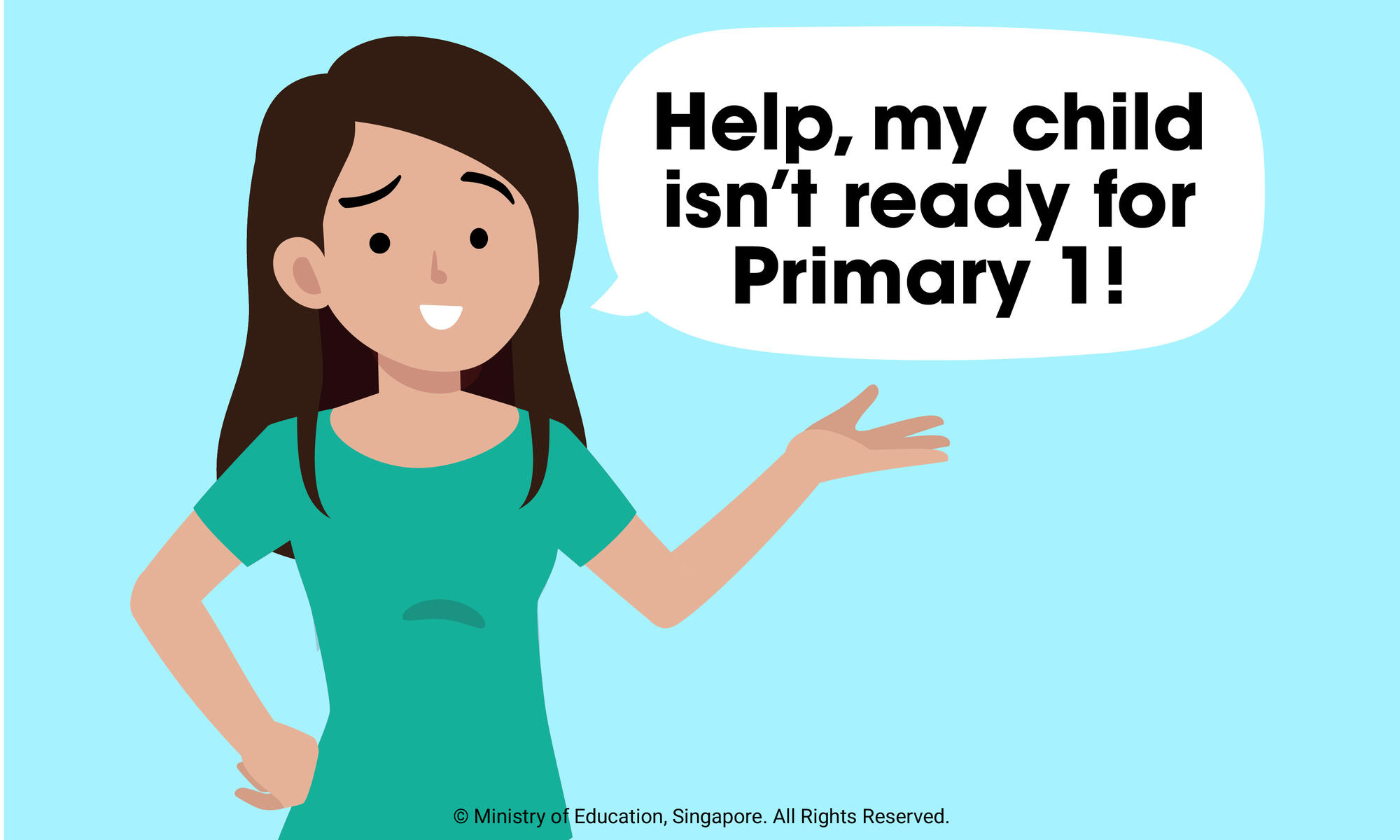
.jpg)

